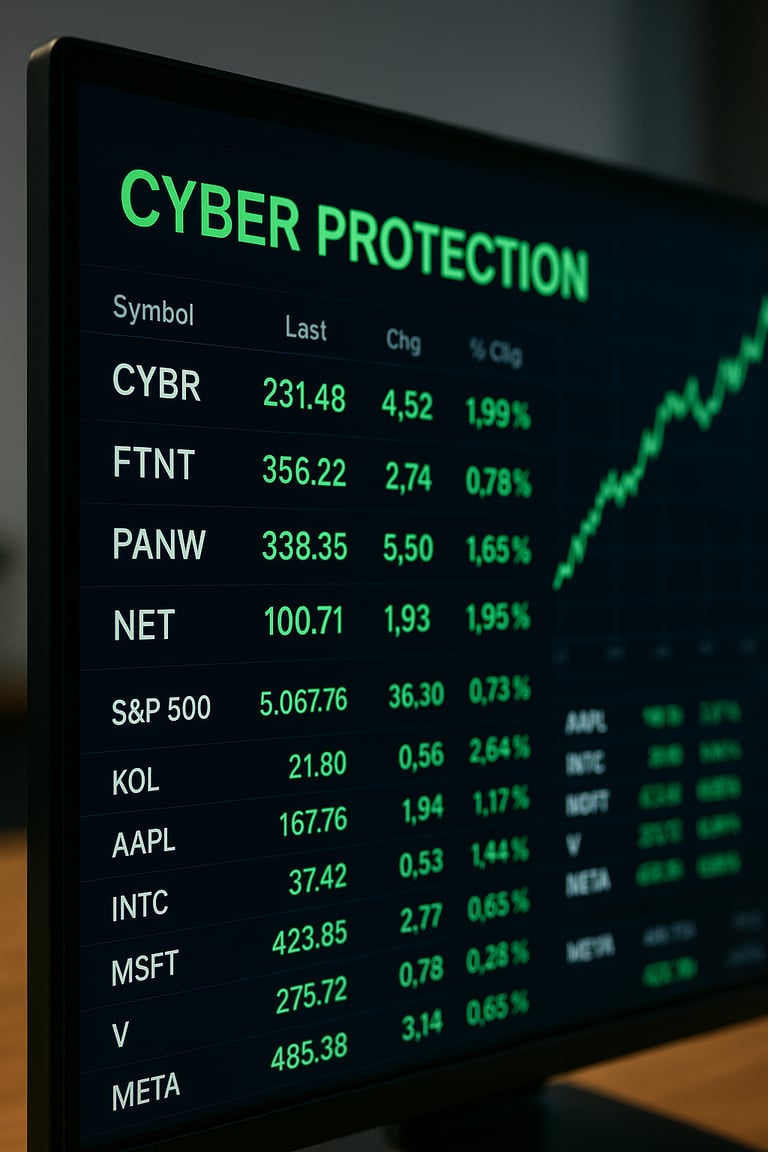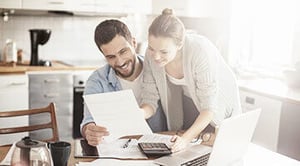Marks and Spencer Group Plc (LON:MKS) has today announced its Full Year Results For 52 Weeks Ended 28 March 2020.
| 52 weeks ended | 28 Mar 20 | 30 Mar 19Restated1 | Change % |
| Group revenue | £10,181.9m | £10,377.3m | -1.9 |
| Profit before tax & adjusting items | £403.1m | £511.7m | -21.2 |
| Adjusting items | £(335.9)m | £(427.5)m | 21.4 |
| Profit before tax | £67.2m | £84.2m | -20.2 |
| Profit after tax | £27.4m | £45.3m | -39.5 |
| Adjusted basic earnings per share | 16.7p | 23.7p | -29.5 |
| Basic earnings per share | 1.3p | 2.5p | -48.0 |
| Free cash flow2 | £225.0m | £580.8m | -61.3 |
| Net debt | £4.03bn | £4.08bn | -1.2 |
| Net debt excluding lease liabilities | £1.46bn | £1.50bn | -2.6 |
| Dividend per share | 3.9p | 13.3p | -70.7 |
1 Prior year comparatives restated for the adoption of IFRS 16 ‘Leases’ and for the effects of the rights issue completed in June.
2 Free cash flow is cash generated from operating activities less capital expenditure, cash lease payments and interest paid.
There are a number of non-GAAP measures and alternative profit measures “APM”, discussed with this announcement and a glossary and reconciliation to statutory measures is provided at the end of this report. Adjusted results are consistent with how business performance is measured internally and presented to aid comparability of performance. Refer to adjusting items table below for further details.
Steve Rowe, Marks & Spencer CEO said: “Last year’s results reflect a year of substantial progress and change including the transformative investment in Ocado Retail, outperformance in Food and some green shoots in Clothing in the second half. However, they now seem like ancient history as the trauma of the Covid crisis has galvanised our colleagues to secure the future of the business. The way our people have rallied to support our customers and communities has been awe-inspiring. From the outset we recognised that we were facing a crisis whose effects and aftershocks will endure for the coming year and beyond: Whilst some customer habits will return to normal others have changed forever, the trend towards digital has been accelerated, and changes to the shape of the high street brought forward. Most importantly working habits have been transformed and we have discovered we can work in a faster, leaner, more effective way. I am determined to act now to capture this and deliver a renewed, more agile business in a world that will never be the same again.”
● Profit before tax & adjusting items £403.1m, including an adverse profit impact of c.£52m in March which we largely attribute to Covid-19
● Profit before tax of £67.2m including adjusting items of £335.9m, with £212.8m for costs and stock write downs for Covid-19
● Strong Food LFL revenue of 1.9% and operating profit up 11.2%. Volume outperforming the market
● Clothing LFL revenue decline of 6.2% and operating profit down 37.0%, adversely impacted by availability in H1. Reengineering of ranges accelerating during the year
● Acquired 50% of Ocado Retail, a valuable investment in online grocery which transforms the growth potential of M&S Food. Ocado Retail delivered 40.4% revenue growth for the 9 weeks to 3 May. Switchover and synergy plans on track
● Progress against transformation priorities, helping the business to withstand the crisis
● Over £1bn of actions, including c.£500m of planned cost reductions and further actions to manage cash under scenario planning for Covid-19
● Liquidity secured including removal or substantial relaxation of covenants on the £1.1bn revolving credit facility (RCF). Eligibility to the UK Government’s Covid Corporate Financing Facility (CCFF) confirmed and £300m allocated
● Outperformance against Covid-19 scenario, with cashflow over £150m better than scenario after six weeks, largely driven by trading
● Launched the Never the Same Again programme to draw on learnings from the crisis and capitalise on the opportunities to drive the transformation plan in a changed consumer environment.
Good progress on transformation in 2019/20
Prior to the Covid-19 impact, both major businesses were making good progress in implementing the transformation programme with Food outperforming the market and despite teething issues in changes to men’s clothing ranges, kids, womens, and lingerie starting to show sustained, improved performance.
In recent years we have made a number of structural changes to the basic infrastructure of the business including closing 54 of our legacy shared stores, migrating off mainframe infrastructure to cloud based systems and implementing new warehouse management systems. These changes have been instrumental in helping the business to react effectively in the early weeks of the crisis.
To illustrate more clearly our new more decentralised model, we are for the first-time introducing segmental profit reporting in our family of businesses: UK Food, UK Clothing & Home and International. This demonstrates the strength and balance of the combined businesses, which has been a major source of resilience in the crisis.
Outperformance in Food
The UK Food business outperformed the market and saw strengthening sales performance as changes to range, value, and customer communication took effect: revenue increased 2.1%, with LFL sales up 1.9%, strengthening throughout the year, including an estimated 0.3% benefit from the effects of Covid-19 in March. Operating profit before adjusting items increased 11.2%. Value perception has improved resulting in growth in volume ahead of value at 3.3%.
We set out the strategy for Food 18 months ago, rebuilt the leadership team and started the repositioning of the business to broaden its appeal and move to ‘trusted value’. The programme was picking up momentum prior to the crisis:
● Price investment was further strengthened through the launch of ‘Remarksable’ value and ‘Fresh Market Special’ lines, many at 65 pence. The level of promotions also continued to reduce. As a result, the price index of comparable product baskets has improved compared with key competitors, resulting in better price perceptions
● A new programme of range innovation was brought forward including significant launches in healthy, Plant Kitchen, made without, and family product to broaden appeal. This was combined with innovative new marketing including Little Shop and Britain’s Got Talent sponsorship
● 5 ‘test and learn’ renewal Food stores were opened showcasing more of the full M&S range in a modern engaging environment and testing new product innovations with encouraging results. We expect to move towards extension of these formats in the coming year
● Through Project Vangarde, which has now been rolled out to 90 stores, the leadership team has demonstrated scope for reducing waste, improving availability and running stores more efficiently.
Ocado Retail positioned strongly for growth
During the year we completed the purchase of 50% of Ocado Retail providing M&S with a profitable, scalable presence in online grocery, the UK’s fastest growing channel. We reported a first time net income contribution for Ocado Retail to group profit of £2.6m for the 7 months to 1 March 2020, with the early contribution reflecting the limited period since completion. This is the contribution to group results prior to switchover to M&S supply on 1 September, which we expect to drive volume growth for M&S Food.
We have been working closely with Ocado Retail to create a ‘one business’ mentality which includes common operating procedures, business plan, and shared talent. Switchover and synergy plans are on track. The value of the investment we have made has been further reinforced by the strong growth reported by Ocado Retail since lockdown, with growth for the most recent 9 week period of 40.4% reported at its AGM on 6 May.
Reengineering Clothing & Home
The UK Clothing & Home business experienced a year of substantial reshaping under new leadership, resulting in some encouraging performance indicators in the second half. However, revenue declined 8.3% overall, with LFL revenue down 6.2%, including an estimated 2.2% adverse impact from Covid-19 in March. Online revenue was level. Operating profit before adjusting items declined 37.0%, largely driven by lower sales, gross margin headwinds related to sourcing and promotional mix and the impact of the crisis.
Trading in the first half was affected by availability issues in Womenswear and in the second half by teething issues with the move of Menswear towards a more contemporary style and fit. However, towards the end of the year, prior to the effects of Covid-19, performance in Womenswear and Kids was encouraging, Menswear saw improving sales trends and Lingerie held its market leading share.
● In Womenswear, reshaping the buy and more contemporary style resulted in improving performance up until the onset of the crisis. Recent range proliferation has been reversed by 11% in Autumn/Winter and the focus on core strengths and hero categories resulted in some strong uplifts. In denim the market leading position was extended with a sales uplift of over 10% over two years
● The successful launch of Goodmove resulted in increases in share of activewear and growth in sales in this category of 16% in the three months post launch
● Kidswear under a new leadership team started to reduce the breadth of range and focused on stronger casual basics at better value resulting in LFL sales growth in the second half
● Menswear experienced initial problems with size and fit as the range migrated towards a more contemporary style and look, in order to address issues in the shape of buy. However, these issues should be non-recurring and we saw encouraging uplifts for instance in knitwear, the standout category, with LFL sales growth of 5.6%
● Lingerie market share held at 27%, and strong performances from ‘Collection’ as option count was marginally reduced
● Online performance improved prior to the adverse impact of Covid-19 on trading in March, but not as fast as expected and is being reorganised under new leadership as part of the post Covid-19 programme.
Changing the model in International
The first phase of transforming the International business has been the move away from direct ownership to a franchise and joint venture model, working with strong partners in high potential territories. The focus now is on localising ranges, reducing prices and will be increasingly on developing sales online globally.
International revenue at constant currency decreased 2.5%. Operating profit before adjusting items declined 15.2% to £110.7m, largely as a result of trading conditions in March.
The International online operation brings together operations in 44 markets including direct shipments from the UK, sales on third party marketplaces and sales fulfilled by franchise partners on their own websites. Online retail sales increased 26% to £103m, supported by the launch of 5 new transactional websites and an expansion of ranges on marketplaces.
Over £1bn of actions to reduce costs and manage cash under scenario planning for Covid-19
The Covid-19 crisis started to have an impact on the business in the first week of March with reductions in UK Clothing & Home sales which declined by 6.2% and 26.9% the week after. With the onset of lockdown, the effect on sales, colleagues and customers in both businesses has been dramatic. Clothing sales at the low point dropped to 16% of their level a year ago. Without the resilience of the combined Food and Clothing business model and extraordinary loyalty of colleagues the impact on the business would have been even more profound.
Covid-19 scenario
Our belief has been from the outset that the direct impact of the crisis on sales and stock flow will last through the year and that subsequent demand may be depressed. In a challenging environment to forecast accurately the business is being managed against a ‘Covid-19 scenario’ created in the early weeks of lockdown, which reflects a very substantial reduction in sales, particularly in Clothing & Home and volatile Food trading in the early months of the crisis. This scenario has been stress tested and even in the event of a longer and deeper impact on trading, the group maintains sufficient liquidity. Although we will be drawing on our available credit facilities in the coming year, under the scenario the business will have significant liquidity headroom throughout the next 18 months. We are pleased to note that in the first 6 weeks of the new year, sales and cash have substantially outperformed the scenario.
The scenario has the following core assumptions relative to our original FY 2020/21 budget:
● UK Clothing & Home, 70% decline in revenue for the four months to July and only a gradual return to original budgeted levels by February 2021 impacting annual revenue by c.£1.5bn
● UK Food, 20% decline in revenue for the four months to July, with revenue level thereafter, impacting annual revenue by c.£0.4bn
● International – Clothing & Home revenue to follow a similar pattern to UK Clothing & Home with a significant decline in April due to closures, impacting annual revenue by c.£0.2bn.
The table below sets out the revenue assumptions in the scenario by quarter showing variance to original budget.
| % change to budget | Q1 | Q2 | Q3 | Q4 | FY |
| UK Clothing & Home | -74 | -61 | -40 | -6 | -46 |
| Food | -20 | -6 | – | – | -6 |
| International | -51 | -20 | -9 | -9 | -22 |
In the light of the prolonged partial or total lockdown envisaged in our Covid-19 scenario, we have taken actions totalling c.£1bn relative to original budget to reduce costs and manage cash, while protecting our transformation plans and trading potential.
Substantial cost reduction of c.£500m in FY 2020/21
● Non-essential spending has been reduced at all levels. For instance, we expect Clothing & Home marketing to be down c.£50m for the year, pay levels and recruitment have been frozen saving c.£40m and technology costs will be down c.£40m
● Costs which are largely related to sales volume are being managed down, for instance Clothing & Home logistics down c.£60m, colleague costs post lockdown saving c.£40m and International costs saving c.£30m
● Fixed property related charges are expected to decline with service charge reductions, rent costs and other occupancy cost savings down by c.£20m before any more far reaching changes to the store portfolio
● Government support measures including business rates relief of c.£172m and the job retention scheme of c.£50m will further support this year’s outcome.
In addition to these savings we are exploring the potential for other changes, including a more streamlined support centre, changes to leadership structure and negotiations with landlords on commercial terms on lease contracts.
Actions to stabilise cashflow exceeding £500m
In view of the steep increase in working capital resulting from unsold stocks we are experiencing a cash outflow during the lockdown period and expect to draw on our credit facilities in the months ahead. Under the Covid-19 scenario, drawings are estimated to peak in early Autumn at c.£600m, although our current performance would suggest a lower figure. To reduce risk, maximise liquidity, and enable a return to growth in the future steps have been taken to underpin cash flow and reduce working capital.
● Capital expenditure for the year has at this stage been reduced to c.£140m, saving c.£195m in cash outflow in the current year against budget. Only essential and short payback investment focused on growth has been retained such as the new ambient food depot, investment in online fulfilment and site development and the digital & data programme
● Cash management initiatives including in-year deferral of corporation tax, VAT and duty payments and likely savings from lower corporation tax paid for 2020/21
● As previously reported, there will be no final dividend for 2019/20 and the board does not expect to pay a dividend for the current financial year, using the funds instead for balance sheet support in the region of £340m.
Liquidity and additional headroom secured for 2020 and 2021
It was an immediate priority for the company to secure its debt facilities to provide for the cash requirements modelled under the Covid-19 scenario described above and given the risk in an uncertain market to ensure there is downside protection under even more adverse sensitivities. Therefore:
● Formal agreement has been reached with the syndicate of banks providing the £1.1bn revolving facility to remove or substantially relax covenant conditions for the tests arising in September 2020, March 2021, and September 2021
● We have confirmed that we are eligible to access funding under the Government’s Covid Corporate Financing Facility and been allocated an issuer limit of £300m
● As a result of these actions we expect to have considerable headroom under our available facilities in FY20/21. While we will experience a cash outflow in the first half of the year as sales reduce and we pay for our previous stock commitments, we would expect this to partly reverse in the second half of the year
● Under the Covid-19 scenario, drawings against our available facilities would be in the range of £300m-£350m by the end of 2020/21
● The cancellation of the final dividend of c.£130m will generate further cash savings after year end.
Experience to date has been ahead of the Covid-19 scenario against which we set strong cost and cash management plans and has outperformed the scenario by over £150m year to date, with actions planned to further improve our cash flow. If sustained, under the Covid-19 scenario we consider the Group well positioned to exit the crisis with limited drawdown against its facilities in 2020/21, with a further saving of the final dividend in the early months of next year. We intend to adopt a dynamic approach to investment using sustained cashflow outperformance to capitalise on strong investment opportunities under our ‘never the same again’ agenda.
Management of excess Clothing & Home stock
Like all fashion businesses one of the biggest challenges arising from the crisis is the mounting backlog of unsold stock for Spring/Summer 2020 and the forward pipeline of stock already ordered for Autumn/Winter. We closed 2019/20 with Clothing & Home stock of c.£500m and at that time had committed forward orders of £560m scheduled to arrive in the following six months. As the lockdown eases a large proportion of current season stock will remain unsold and demand for many categories is likely to be weak. We have acted quickly to improve this position.
● We have cancelled late summer stock which will no longer be required reducing forward commitment at cost by £100m
● Of the balance of stock and forward orders c.£400m is year-round basic product where M&S trades strongly and which will be carried forward at low risk, albeit creating a short-term increase in stock carrying levels
● Of the unsold seasonal stock, we have made arrangements to hibernate around £200m until Spring 2021, secured storage facilities and planned for the cost of these actions
● We have therefore taken a charge of £145.3m in adjusting items to reflect the cumulative impact of the combined handling, clearance, hibernation and write-off of the stock bulge described above.
The combined impact of lockdown, social distancing and depressed demand is therefore likely to continue through the year.
Never the Same Again
During the crisis we have all had to work differently and customers have rapidly changed habits and may never shop the same way again. We intend to use the learning from the crisis and have drawn up our ‘never the same again’ agenda to accelerate transformation.
What we are learning in the crisis
The crisis illustrated how differently we can use technology, run stores, and make decisions fast. In a business with a history of slow cultural change we intend to use these lessons, to ensure that as lockdown eases, we are never the same again in culture, organisation and work habits. For instance:
● A smaller top team has made decisions faster and more efficiently delegating trading and operating management to business unit heads. Numerous working groups, committees and elaborate management processes have been disbanded
● Support colleagues have learnt to improvise their routines at lower cost with no detriment to trading standards
● Our strategic relationship with Microsoft has been highly effective, supported by Teams
● In stores given the need to furlough and redeploy colleagues, valuable lessons have been learnt about our ability to multi-task and increase the pace of work with no adverse impact on service
● Online has for a period been our only significant Clothing business and has illustrated the need to be leaner and more integrated to compete with online pure plays
● The reduction in forward order volumes in Clothing has forced the need to change ranges to buy more of less from fewer core suppliers.
What will never be the same again
Steps have already been taken to ensure that the change of gear of the last few weeks endures, including the following:
● Steve Rowe has already announced changes to the business leadership structure with the formation of a small executive board consisting of the operating MDs together with Katie Bickerstaffe who has now started as Chief Strategy & Transformation Officer, and Eoin Tonge Chief Finance Officer who is arriving in early June
● Central support costs and headcount will be examined at all levels, delegating decisions to business unit and category heads
● In stores, multi-tasking and more flexible management structures will be integrated into the way the business works and manages
● Digital is being consolidated under a single transformation team bringing together data, online development and technology
● The direct to the front-line tech enabled communication combined with increased flexibility in working patterns will become permanent.
Accelerating the transformation programme
● The move to ‘trusted value’ in Clothing & Home will be accelerated and option count reduction and supplier concentration brought forward
● The reduction in range and shift towards fast moving product at great value necessitated by the crisis will result in a permanent reduction of 20% in Autumn/Winter store option count
● The role of the sourcing offices will be increased so that sampling, ordering and quality issues are dealt with offshore
● A faster, ‘near-sourcing’ supply chain will be developed, to enable the test and re-order of seasonal fashion lines particularly for the online business
● The replacement of ageing stores already underway and shift in relationships with property providers will accelerate
● The longstanding issues with availability and waste in the Food supply chain will be tackled with the roll out of the Vangarde programme and addressing the contract and relationship with Gist.
Becoming an Online winner in C&H and Food
Customers may never shop the same way again. The sharp growth of online grocery during the crisis is evidence of this as is the strengthening performance of our online Clothing & Home.
The Ocado joint venture relationship is an integral part of our strategy to bring M&S Food into the online and home delivery market which we expect to be even more vibrant as a result of the crisis. Since the formation of the joint venture Ocado Retail has performed strongly and following lockdown, revenue in its most recently reported 9 weeks to 3 May was up 40.4%.
The Food business is now working closely with Ocado Retail to ensure that it has a compelling offer at the switchover from the Waitrose supply contract on September 1st.
● Adding over 6,000 M&S lines to Ocado from September compared with just c.4,000 Waitrose lines which will be removed from the site. We believe M&S has substitutes at the same price or lower, and of the same quality or better, for the majority of the current offer
● Finalising product data sets for online trading, supply chain processes for direct to Customer Fulfilment Centre deliveries and switchover procedures for September
● Negotiating supplier terms and other working arrangements to deliver synergies for M&S starting this year and building to not less than £70m in 36 months from inception of supply
● Agreeing through Ocado new supply agreements with major branded suppliers to improve M&S competitiveness in branded sourcing
● Bringing onto the Ocado Retail platform around 1,600 core Clothing & Home lines per year to be available on the site, providing a further route to market and a customer acquisition channel. The Autumn range will be launched in September with c.850 lines made available.
In addition, in Clothing & Home, the M&S.com and large stores platforms will be opened to complementary guest brands to broaden appeal and increase online growth.
Further strengthening the management team
We have created a significantly renewed management team, to implement the “never the same again” agenda. In the coming weeks the new team will finally take shape with a number of important new arrivals:
● Katie Bickerstaffe has joined as Chief Strategy and Transformation officer
● Eoin Tonge joins as CFO in June
● Richard Price joins as Managing Director, Clothing & Home in July
● Will Smith joins as Property Director in May
● Stephen Langford joins as Head of Clothing & Home online in May
● Helen Milford joins as Store Operations Director in June
● Paul Babbs joins as Head of Clothing & Home supply chain in May
● Craig Lovelace joins as Finance Director of Food in June
Recent trading performance
The first six weeks trading has been ahead of the Covid-19 scenario particularly in Food and online.
● Store sales in UK Clothing & Home were reduced to a trickle due to the closure of space running down (98.8%) year on year at the low point. In store sales of essentials increased from £252k per week in the first week of lockdown to £1.4m per week by week six
● Although online Clothing & Home has traded throughout, demand in the initial weeks for clothing was very low with a gradual uplift since. In the last 3 weeks online sales have been running c.20% up year on year
● Standalone Simply Food stores have traded strongly, up 17% with a positive trend in many Retail park stores which typically have direct access from car parks. In the earliest weeks of lockdown this was offset by lower sales in travel franchise units (c.5% of revenue) and the closure of in-store hospitality and cafes (c.4% of revenue). In the last three weeks overall Food sales have on average been level.
● Marks & Spencer also experienced an initial adverse margin mix as demand shifted towards ambient grocery sales, although this is now diminishing.
| % change to LY* | 6 weeks to 9 May 201 |
| Clothing & Home | -75.0 |
| Food | -8.8 |
| International | -51.3 |
| Group | -32.7 |
| Clothing & Home.com | 6.4 |
| M&S.com | 19.9 |
| Food ex hospitality | -4.6 |
1. unaudited revenue for the 6 week period from 29 March 2020 to 9 May 2020
*At constant currency








































